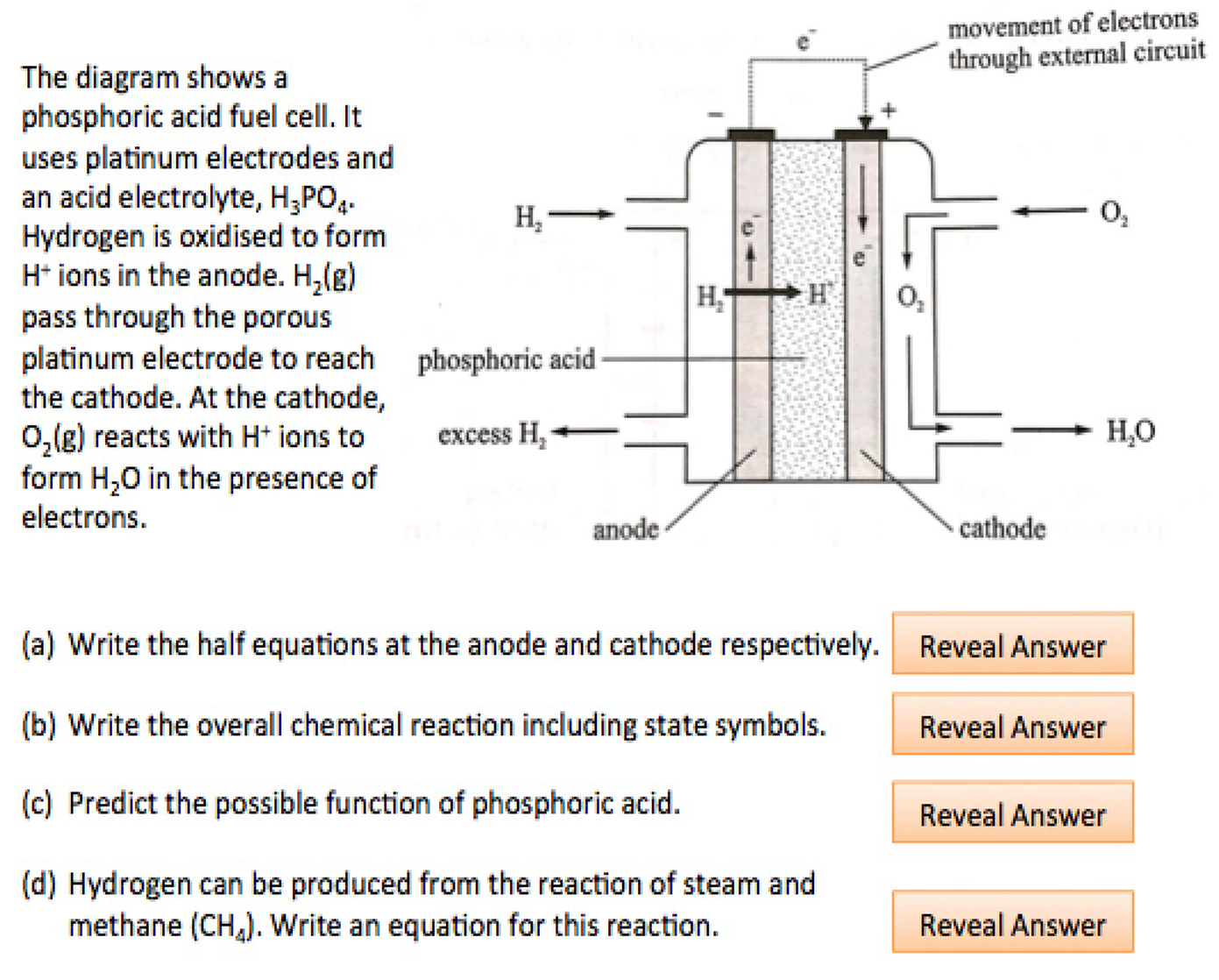At the anode, H2 --> 2 H+ + 2e-
At the cathode, 4 H+ + O2 + 4e- --> 2 H2O

At the anode, H2 --> 2 H+ + 2e-
At the cathode, 4 H+ + O2 + 4e- --> 2 H2O
2 H2(g) + O2(g) --> 2 H2O(l)
It acts as an electrolyte.
CH4(g) + H2O(g) --> CO(g) + H2(g)
In the external circuit, electrons flow from the positive terminal to the negative terminal of the battery during electrolysis.
True.
False.
The smaller the pH value, the stronger the acid.
False.
When acids react with metals, they produce salt and hydrogen gas. Presence of hydrogen gas can be tested using a lighted splint - it will be extinguished with a 'pop' sound in the presence of hydrogen gas.
If salt and water are produced from a reaction with acid, it the other reactant was a base.
True.
Presence of the carbon dioxide can be tested using limewater - white precipitate will form in limewater when carbon dioxide is bubbled into it.
False.
Strength of an acid is determined by the extent of dissociation in water to produce hydrogen ions. Strong acids ionise fully in water to produce a greater concentration of hydrogen ions as compared to weak acids, which only ionise partially.